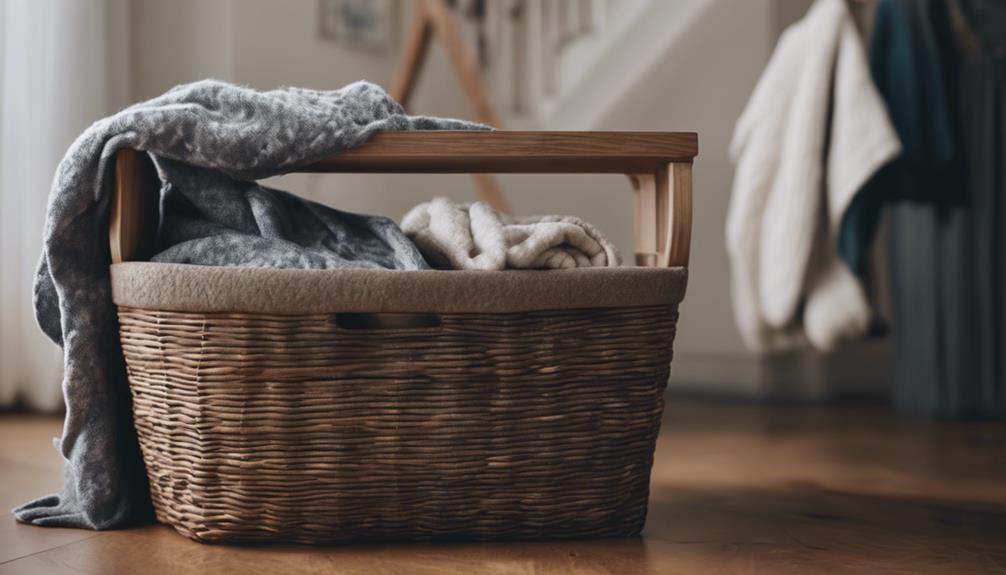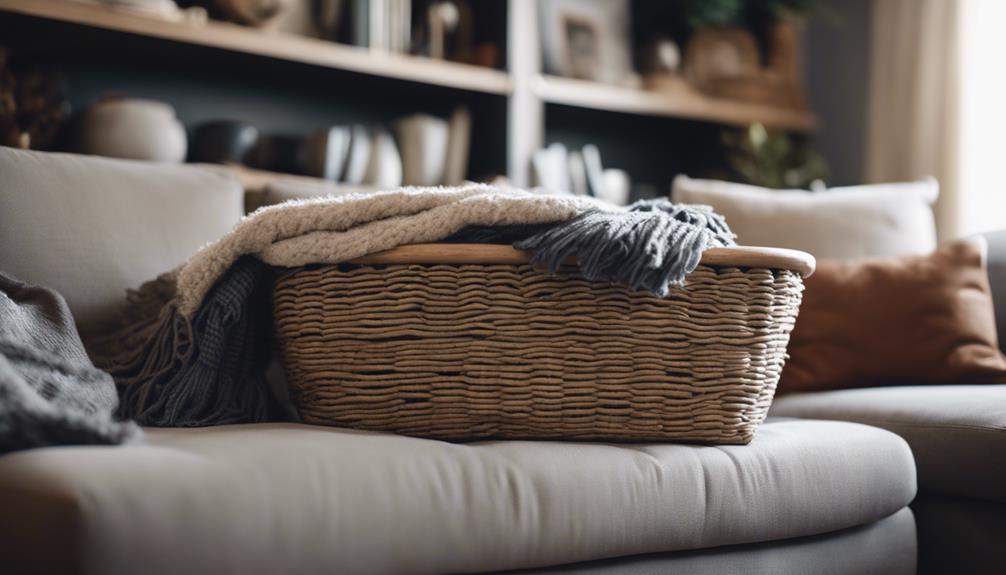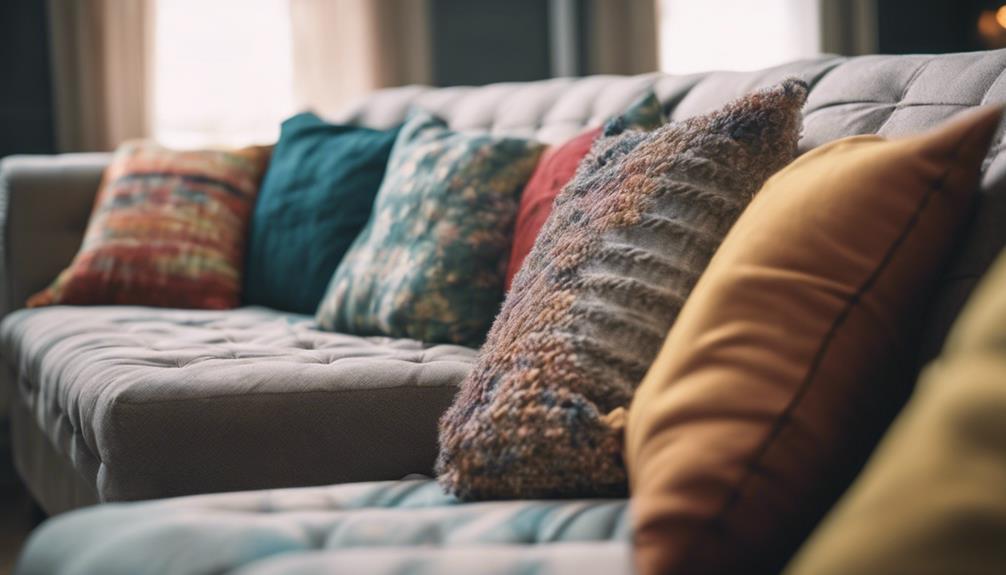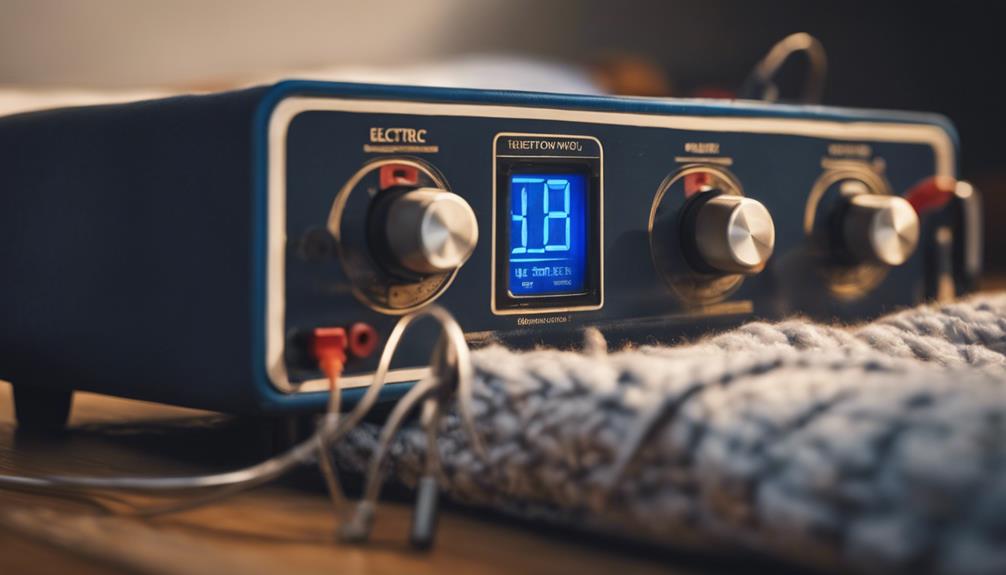Electric throws typically consume around 100-150 watts of power, similar to electric blankets. They are efficient and cost-effective, providing targeted warmth without consuming a lot of electricity. With fibreglass cables for consistent heating, they are energy-efficient. You can save even more by selecting lower power settings. Running an electric throw for 6 hours costs approximately 7.2 cents per day. They have a minimal impact on electricity bills, accounting for only about 1.37% of annual household usage. These factors should be considered when choosing a heating option. Discover more about their efficiency and cost-effectiveness for affordable warmth.
Key Takeaways
- Electric throws consume 100-150 watts, similar to electric blankets.
- They have minimal impact on electricity bills, costing about 0.02145 euros per hour.
- Adjustable power settings offer personalized and energy-efficient heating options.
- Electric throws provide targeted warmth, saving energy by heating specific areas.
- Choosing a throw over central heating can lead to significant cost savings.
Electric Throw Energy Consumption

When using an electric throw, we typically consume around 100-150 watts of power, which is similar to electric blankets. This low power consumption makes electric throws an energy-efficient and cost-effective heating option. Modern electric throws are designed with efficient fibreglass cables that help evenly distribute heat, ensuring that we get the most out of our power usage. Compared to other heating appliances, the power consumption of electric throws is relatively low, making them a practical choice for keeping warm while being mindful of energy usage.
Additionally, electric throws are known for providing localized warmth efficiently. This means that we can enjoy a cozy and comfortable environment without having to heat up an entire room, saving both energy and money in the process. By focusing the heat directly where it's needed, electric throws offer a convenient and effective way to stay warm during colder months.
Wattage of Electric Throws
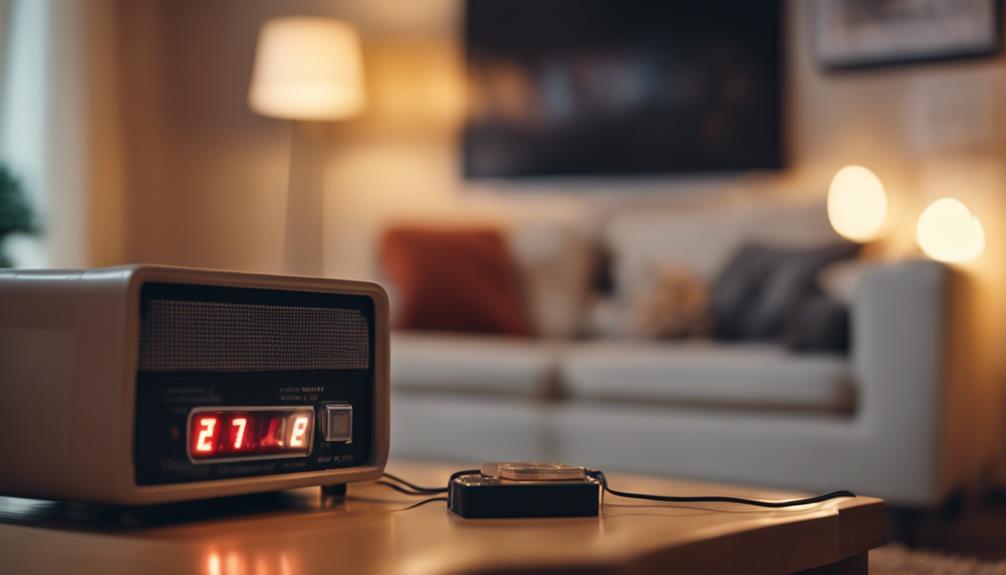
Electric throws typically guarantee between 50 to 150 watts of power, providing customizable warmth levels for users. The wattage determines the heating capacity, with lower wattage models offering gentle warmth and higher wattage ones providing more heat.
Using an electric throw for six hours daily at 100 watts costs approximately 7.2 cents per day, showcasing their energy-efficient nature. These throws are designed to maintain warmth without significant electricity usage, making them cost-effective options for staying cozy.
Modern electric throws come with advanced features that include personalized heating options, allowing users to tailor their comfort levels to suit their preferences. When considering electric blankets or throws, understanding the wattage can help in choosing the right one based on heating needs and energy efficiency.
Opting for a throw with suitable wattage guarantees effective heating while minimizing overall electricity usage.
Impact on Electricity Bills

Consuming around 100-150 watts of power, an electric throw has a minimal impact on electricity bills. With its low energy consumption, using an electric throw in a household setting can be a cost-effective way to stay warm.
The cost to run an electric throw is approximately 0.02145 euros per hour, making it an efficient heating option that won't break the bank. Even though electric throws contribute to around 1.37% of annual household electricity usage, they're considered a minor factor in energy bills when compared to other heating appliances.
Hence, incorporating an electric throw into your heating routine can offer a budget-friendly solution for keeping warm during colder seasons. If you're looking for a practical and affordable way to stay cozy, an electric throw is a sensible choice that won't have a significant impact on your electricity expenses.
Optimal Power Settings

To maximize the use of an electric throw and efficiently manage electricity consumption, adjusting the power settings based on personal warmth preferences is vital. By using lower power settings, one can effectively reduce electricity consumption while still staying comfortably warm. Ideal settings for the electric throw depend on individual preferences, and energy-efficient models with adjustable heat settings offer flexibility in meeting those needs. Proper usage and control of the electric throw's power are essential to minimizing electricity usage.
| Power Setting | Electricity Consumption |
|---|---|
| High | Higher usage |
| Medium | Moderate usage |
| Low | Lower usage |
| Off | No electricity consumed |
| Adjustable | Customizable |
Efficiency Comparison With Other Blankets
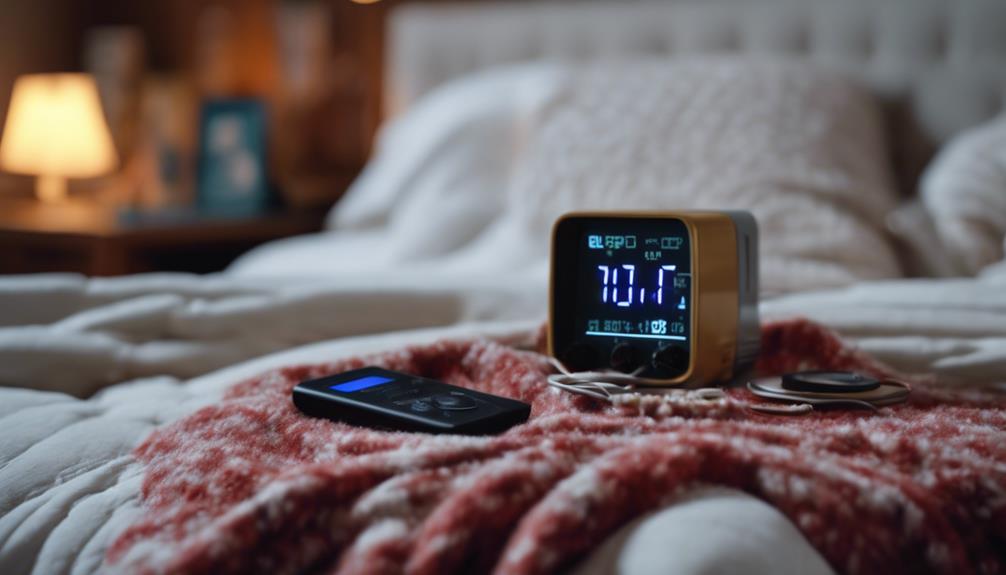
When comparing efficiency with other blankets, one can quickly see the energy-saving benefits of using an electric throw. An electric throw typically consumes 60-100 watts of power, making it an energy-efficient option.
Unlike traditional blankets, electric throws provide targeted warmth, saving energy by focusing heat where it's needed most. Due to their low power usage, electric throws contribute to reducing overall energy consumption in comparison to other types of blankets.
This efficiency translates to cost savings on the electricity bill, as the minimal electricity required to generate heat results in relatively low consumption. Opting for an electric throw over cranking up central heating can lead to significant savings over time, making it a cost-effective and energy-efficient choice for staying warm and cozy.
Cost-Effectiveness Analysis

When evaluating electric throws compared to central heating systems, it's crucial to take into account the energy consumption differences, breakdown of operating costs, and overall efficiency and savings that can be achieved.
Electric throws typically have low wattage, resulting in minimal electricity usage and cost-effective heating solutions.
Energy Consumption Comparison
Comparing the energy consumption of an electric throw to other heating appliances reveals its remarkable cost-effectiveness and efficiency. An electric throw typically consumes 100-150 watts of power, making it energy-efficient and resulting in low electricity consumption.
The cost of running an electric throw for 6 hours nightly for 4 months is around 108 kWh/year, relatively low in comparison to other heating options. These throws are designed for efficient heat distribution, with modern models using fibreglass cables for safety and effectiveness.
When considering energy consumption, an electric throw stands out as a budget-friendly heating solution due to its minimal energy usage. It offers an excellent balance between warmth, cost-effectiveness, and efficiency, making it a practical choice for many households.
Operating Cost Breakdown
In analyzing the operating cost breakdown for electric throws, we find them to be a cost-effective heating option with minimal energy consumption. Electric throws typically use 100-150 watts of power, resulting in low energy consumption.
Running an electric throw for 6 hours nightly over 4 months consumes about 108 kWh/year, making it a budget-friendly choice. The hourly cost of operation is approximately 0.02145 euros, showcasing its efficiency.
While electric throws contribute around 1.37% to annual household electricity usage, they remain a minor factor in the electricity bill. Opting for a modern electric throw with adjustable regulators allows for personalized usage and optimized energy consumption, enhancing cost-effectiveness as a heating option.
Efficiency and Savings
For individuals seeking a cost-effective heating solution, evaluating the efficiency and savings of an electric throw proves essential. When weighing the cost-effectiveness of using an electric throw, it's important to take into account its low electricity consumption.
Here are some key points to ponder:
- An electric throw typically consumes around 100-150 watts of power, resulting in low energy consumption.
- Using an electric throw reasonably can cost as little as 0.0003575 euros per minute or 0.02145 euros per hour.
- Electric throws contribute to about 1.37% of annual household electricity usage, making them a minor part of the overall electricity bill.
- Choosing a modern electric throw with adjustable regulators can provide personalized and efficient usage, ensuring ideal energy savings.
Frequently Asked Questions
Does an Electric Throw Use a Lot of Electricity?
An electric throw doesn't use a lot of electricity. It typically consumes around 100-150 watts, making it energy-efficient.
Using it reasonably results in low electricity consumption compared to other heating appliances. For example, running a 150W electric throw for 6 hours nightly for 4 months consumes around 108 kWh per year.
The cost is relatively low, and adjustable regulators allow for efficient energy consumption, making it a cost-effective way to stay warm.
How Much Does It Cost to Run an Electric Throw?
Running an electric throw costs around 1.5 to 2.25 cents per hour, depending on the wattage and electricity rates. This expense is relatively low due to the throw's power consumption of 100-150 watts, similar to electric blankets.
As long as the usage is reasonable and the right wattage model is selected, an electric throw proves to be a cost-effective and energy-efficient option for localized warmth.
How Much Does an Electric Blanket Raise Your Bill?
When considering how much an electric blanket raises your bill, it's crucial to highlight that it typically consumes 100-150 watts, resulting in low energy usage.
Using it for 6 hours nightly for 4 months can add up to 108 kWh/year, which is relatively low. The cost is efficient, representing only around 1.37% of annual electricity use.
What Is the Difference Between Electric Throw and Electric Blanket?
Electric throws differ from electric blankets in size and purpose. Throws are smaller, perfect for sofas or chairs, providing targeted warmth while watching TV. They use similar technology but consume less electricity due to their size.
Versatile and portable, they're convenient for various areas. These differences make electric throws ideal for localized comfort without notably raising your electricity bill.
Can an Electric Throw Impact My Electricity Bill?
Using an electric throw can impact your electricity bill, as it consumes energy while in use. However, the impact on your electricity usage will depend on how often you use the electric throw and for how long. Being mindful of its usage can help manage the increase in electricity usage.
Conclusion
To sum up, an electric throw doesn't use much electricity compared to other appliances. With appropriate usage and ideal power settings, the impact on electricity bills is minimal.
It's a cost-effective and efficient way to stay warm during colder months. Remember, every little bit helps when it comes to saving energy and money.
So, don't hesitate to snuggle up with your electric throw and enjoy the warmth without worrying about the cost.

